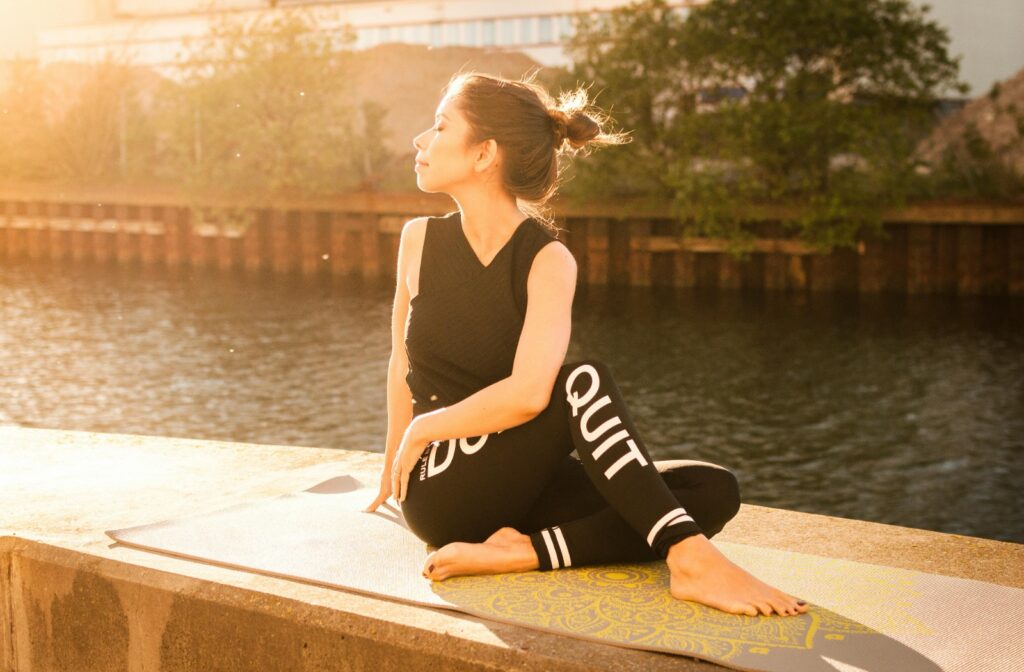Yoga is a way of retreat into silence, calm and good health in a world that is in relentless hurry, artificial, and noisy. It is a science which combines body, mind and spirit namely yoga as it is based on the Indian culture which dates more than 5 000 years.
What is Yoga?
The word “yoga” comes from the Sanskrit root “yuj,” which means to unite or join. It is a representation of the integration of consciousness of the individual and the universal. Yoga is a spiritual practice which introduces peace between body and mind traditionally. Over time, it has evolved into various forms, some focusing on physical postures (asanas), others on breathing, meditation, and ethical living.

The Origins of Yoga
The origin of yoga can be traced back to ancient India which is mentioned in books respected as sacred such as Vedas, Upanishades and more importantly, the book on yoga named Yoga Sutras of Patanjali also known as the primary text of classical yoga. Patanjali defined yoga as “Chitta Vritti Nirodhah,” which means the cessation of mental fluctuations. Simply put, yoga calms the storm inside the mind.
Branches of Yoga
Yoga is not one-size-fits-all. Depending on one’s personality and goals, there are several branches:
1. Hatha Yoga
2. Raja Yoga
3. Kundalini Yoga
4. Karma Yoga
5. Bhakti Yoga
6. Jnana Yoga
All these branches do deal with distinct aspects of the self, but all of them are the path towards inner peace and enlightenment.
Have a look at the types of Yoga by hitting the Read More button below :
Benefits of Practicing Yoga
Yoga has been scientifically known to have limitless benefits, both physically and mentally.
Physical Benefits:
Better flexibility and muscle strength: The constant yoga exercise leads to the stretching and strengthening of muscles as well as an improvement of posture.
Enhanced Respiratory Function: Pranayama (yogic breathing) increases lung capacity and oxygen flow.
Cardiovascular: Some yoga postures and routines reduce pressure and cholesterol.
An Increased immune system: Yoga lowers the levels of stress hormones and improves the lymphatic system improving immune response.
Pain Relief: Yoga is useful in providing reliefs to chronic conditions like arthritis, back pains and migraines.
Mental & Emotional Benefits:
Aids in reduction of stress/anxiety: Since it stimulates the parasympathetic nervous system, yoga helps to relax the body and hence reduces cortisol.
Increases Physical Toughness: There is improved physical endurance, as well as mental concentration through the act of meditation and breathing.
Emotional Stability: Yoga makes one more mindful to deal with the emotions more calmly.
Good Sleeping Habits: Yoga relaxation also battles insomnia and increases the quality of sleep.
Yoga in Modern Times
Yoga is now worldwide and is utilized by millions of people belonging to different cultures. It is taught in the gyms, studios, schools, those corporate offices and even prisons. Whether it is Hollywood stars or yogi-seekers finding ways to cope with life everyone is using yoga as a way to balance their lives.
Even doctors prescribe yoga as a secondary treatment of disorders such as depression, PTSD, diabetes and heart disease.
Popular Styles of Yoga Today
Vinyasa Yoga- This is a lively form of vinyasa where breathing and area are synchronized.
Ashtanga Yoga Ashtanga Yoga is a challenging series of postures, which are excellent strength builders and endurance strengtheners as well.
Iyengar Yoga- Emphasis on alignment and there is general use of props.
Yin Yoga A meditative style of yoga that integrates in it slow movements in touch with the deep connective tissues.
Restorative Yoga- Long holds, use of props which deeply relaxes the body.
All the styles have their rhythm and point-of-focus but this is how they all come to one place-balance.
How to Start Your Yoga Journey
1. Find the Right Style – Start with Hatha or Vinyasa if you’re a beginner.
2. Choose a Comfortable Space – Whether it’s a studio or your home, it should be quiet and clutter-free.
3. Buy Some Basics Yoga mat, comfy outfit and perhaps a yoga block or yoga strap.
4. Be Consistent – Like any practice, consistency is key. Even 15 minutes daily can make a difference.
5. Bring the Listening to Your Body – You should not be harsh on your body but listen to it using yoga.
Conclusion: More Than Just Exercise
Yoga is not referring to the ability to touch your toes; it has got to do with what you grasp on the way down. It helps learn self awareness, kindness, discipline, and be in contact with a greater reality. Whether you’re seeking physical health, mental clarity, emotional balance, or spiritual growth, yoga welcomes you.
This hectic world cannot afford to be without yoga, it should become a necessity. It will be a visit to your realest identity… the comforting message that the peace was always there, within you.
